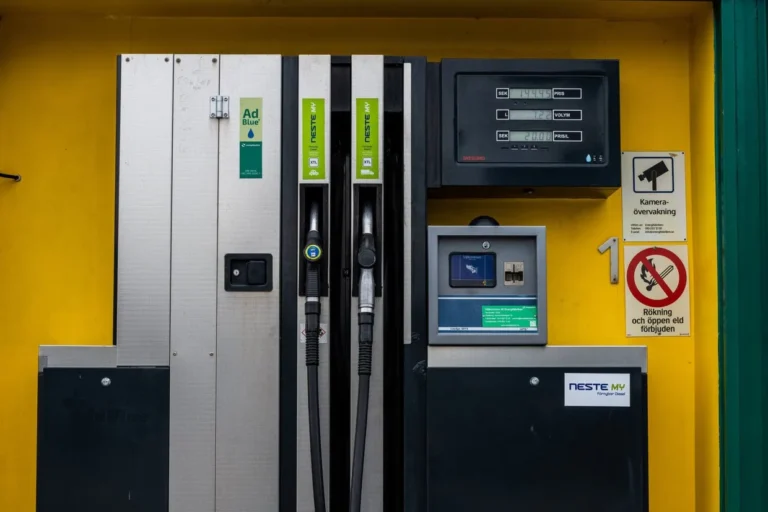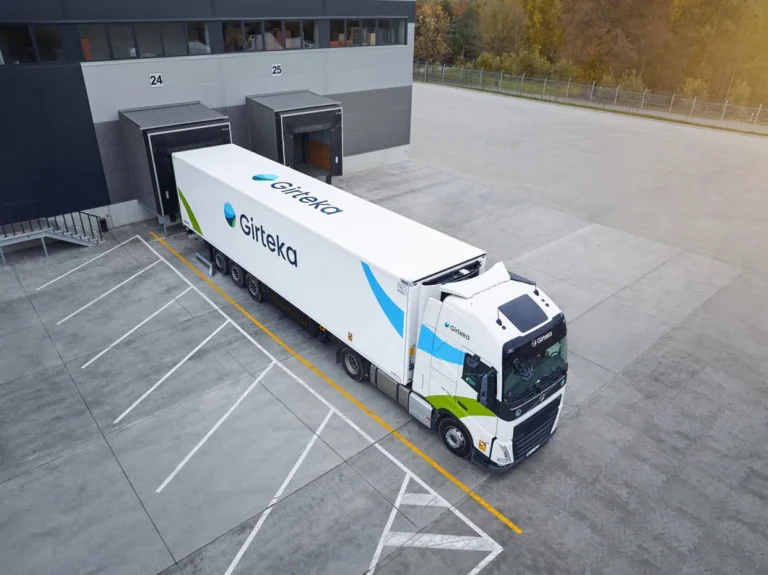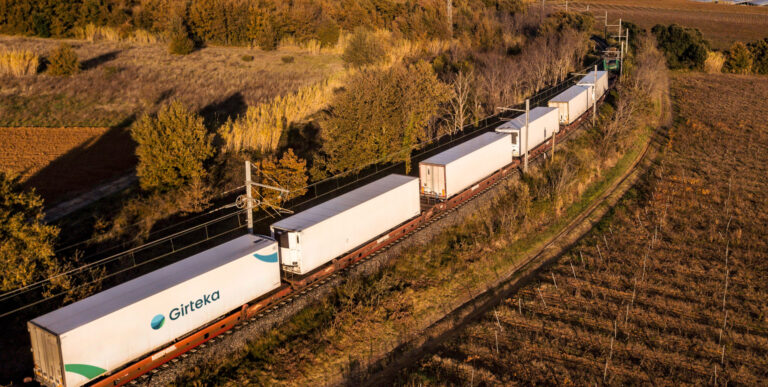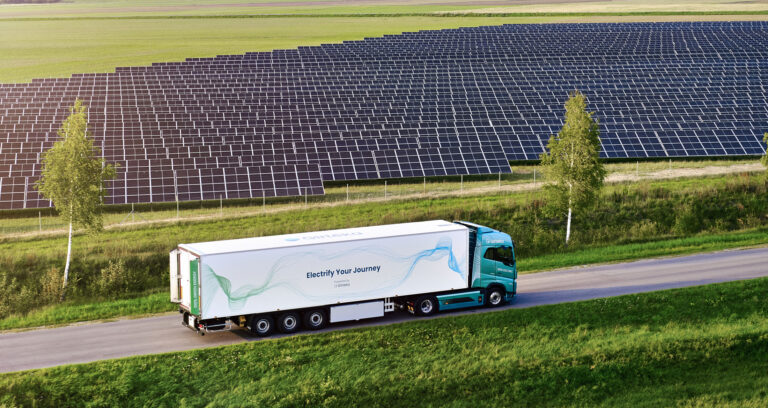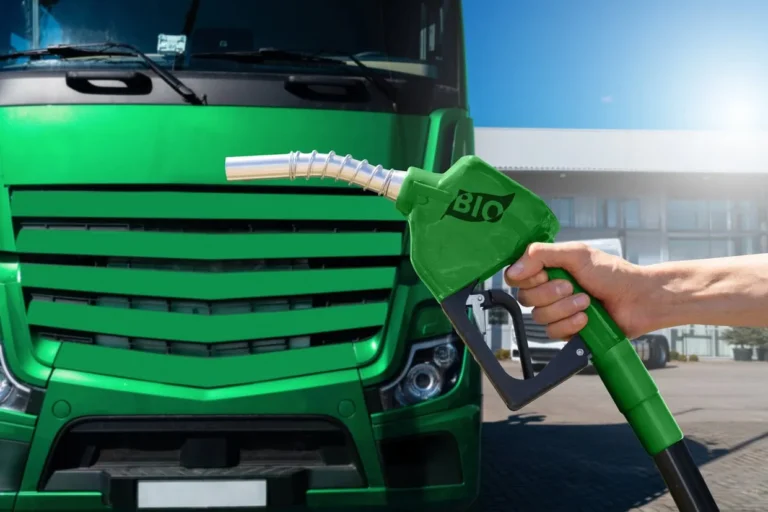Hydrotreated Vegetable Oil (HVO) is a potentially interesting alternative solution for trucking companies. An immediately available fuel, it can reduce a truck’s emissions up to 90%, promising a more sustainable fuel that can be used right here and right now on Euro 6 standard diesel trucks. As emissions regulations are reportedly set to get more stringent, HVO could become the guiding light towards a greener future for road transport companies until we wait for the mass adoptions of true emissions-free vehicles – yet the fuel is no cure-all solution, as there are issues associated with the usage of it across Europe – after all, delivering such emissions savings comes at a cost.
HVO is different from biodiesel. Despite the fact that while the latter is produced from “different types of raw vegetable oils from energy crops, used frying oils or animal fats using the conventional transesterification technology,” while the former is made from “vegetable oils, such as rapeseed, sunflower, soybean, and palm oil, as well as animal fats,” according to one study evaluating HVO, the characteristics of the two are vastly different.
Second-generation biofuels
Fatty acid methyl ester (FAME), or as they are widely known as biodiesel and bioethanol, were some of the first alternative fuels used for road transport to reduce their emissions, pioneering the way for combustible liquids to enter Internal Combustion Engines (ICE). They have largely dominated the market in the
For example, biofuel has a “higher cetane number, good lubricity, higher flash point, and no sulfur or aromatics,” continued the study, while HVO’s main downside is the fact that due to its low lubricity, there always has to be a lubricating additive, typically conventional diesel in order not to damage the ignition system. Furthermore, “the high difference between the cetane numbers of conventional diesel fuel and HVO would require some adjustments in the engine control to compensate for the fuel igniting earlier in the cycle.” Still, as the study pointed out, first-generation FAME-based fuels “increases NOx emissions during both steady-state and transient operating conditions,” as well as increases the average fuel consumption of the vehicle due to the lower energy content of biodiesel.
Meanwhile, the same could not be said about HVO, as the authors cited the fact that “synthetic fuels or HVOs usually lead to exhaust emissions benefits and good engine performance,” as multiple studies have showcased that there were substantial reductions in terms of “NOx, PM, CO, and HC emissions are reported with the use of HVOs on heavy-duty engines.”
From a fuel manufacturer’s point of view, HVO brings in the advantage that it can meet regulatory standards. Neste, a Finnish-based fuel producer, stated that its HVO product called Neste Renewable Diesel meets the EN 15940 class A standards (higher cetane class) in the European Union (EU). The fuel can be interchangeably used on newer, Euro 6 or Euro 5 standard engines, as the “paraffinic diesel should not cause any risks in engines or vehicles.” However, the Finnish oil refining company warned that “exhaust regulations may formally require that vehicle manufacturers need to give an allowance to use paraffinic diesel.” Crown Oil, a United Kingdom-based fuel and lubrication distributor, described HVO as “functionally almost identical to fossil diesel and can, therefore, be used and handled as a drop-in alternative to fossil diesel without needing to amend infrastructure or clean out existing stock.”
However, the British distributor, one of the only supplies of HVO in the country, also noted that the supply of the fuel is “available nationwide with same day and next day deliveries.”
Limited availability
The second-generation alternative fuel promises impressive greenhouse gas (GHG) emissions savings, with Neste estimating that it reduces GHG emissions by between 50 and 90%, depending on the source used to produce HVO, while Crown puts that number to up to 90%. A report by the European Topic Centre on Climate Change Mitigation and Energy (ETC/CME) from November 2020, analyzing the intensity put in a more conservative estimate of up to 74%, excluding indirect land use change (ILUC). Nevertheless, reducing the environmental impact of using traditional diesel by such a rather impressive number surely would warrant the mass adoption of HVO?
A short answer would be yes, but the long answer is that it is not so simple to manufacture and deliver the fuel to end-users, namely road freight transport companies across Europe. The same report by ETC/CME ran through the numbers at the end of 2018 and concluded that the GHG intensity of fuels used in the EU was reduced by 3.7% from 2010 to 2018. With a 6% minimum target looming, and a 0.3% reduction between 2017 and 2018, suppliers and countries alike had their work cut out for them. For example, Croatia and Estonia had a very low biofuel share (0.2% and 2%, respectively), while Finland had a biofuel share of 8%. Sweden lead the EU in 2018, with 23% of the country‘s fuel being biofuel.
In 2019, only three countries in the EU beat the 10% target of share of energy from renewable sources in transport, as per the Directive 2009/28 of the European Commission (EC): Finland (21.3%), the Netherlands (12.5%), and Sweden (30.3%).
Overall, the EU average was 8.9%, meaning that the average country within the bloc had to step up in order to reach the 10% target. Currently, Eurostat indicates that it will provide an update to the data on January 12, 2022. Still, the varying amount of energy from renewable energy in road transport means that the availability and usage of alternative fuels are highly fragmented across Europe.
“Nowadays, HVO has out pathed biodiesel and bioethanol in terms of production capacity growth. In 2021, HVO standalone production capacity was around 3.523 million tonnes,” pointed out SGS Inspire, as Europe consumed more than 1.8 million tonnes of the alternative fuel in 2019. Considering the fact that, as per Eurostat data, vehicles with a permissible weight of between 30.1 and 40 tonnes completed 932.9 billion tonne-kilometers in 2020, that production capacity is nowhere near enough to cover the needs of all transport operators within the continent, at least whose fleets are comprised of Euro 5 and Euro 6 standard trucks.
A questionable future?
The future for road transportation, much like every other industry reliant on powering their main revenue-generating vehicles with fossil fuels, is clear – it has to become greener in every way that’s possible. Not only is that because rising temperatures are a threat to humanity but also because governments across the globe, including the EU, are becoming more and more stringent in meeting certain GHG reduction-related goals. The industries have little wiggle room and have to respond with solutions to meet those requirements, as in the case of logistics, supply chains have to keep moving in order to ensure economic stability across continents.
Truck manufacturers have largely responded to the challenge by developing various powertrains, including electric battery trucks and hydrogen-powered Heavy Goods Vehicles (HGV).
While the end goal is clear – to reduce emissions to zero – the pathway is still being pushed back and forth between electric and hydrogen trucks. The question is whether that development path leaves enough room for alternative fuel sources, as similarly to the still-developing zero-emissions, there is a clear lack of infrastructure, whether on the road or manufacturing (in the case of HVO and hydrogen).
For fossil fuel companies, choosing their next move will be especially crucial, as more and more emphasis will be put on phasing out their main revenue streams. Would HVO provide enough of a Return of Investment (ROI) before zero-emissions vehicles take over?
“There is a large number of traditional oil refineries in the EU with refinery technology suitable for HVO conversion, as they have two hydrotreaters which were originally designed for removal of sulphur and nitrogen from fossil feeds by hydrogen treatment,” read an overview of HVO by the European Alternative Fuels Observatory (EAFO), adding in that traditional oil refineries were already converted across Europe, adding in an extra 1.5 million of manufacturing capacity of HVO in the continent.
According to research by the EC’s Joint Research Centre, second-generation and other biofuels received the third-most funding for 31 projects that are looking into the development of the alternative power source for vehicles, as they can “reduce carbon emissions and can be blended with fossil fuels (up to certain limits) for use in conventional engines with little modification required.” At the same time, “many of the reviewed projects have been researching production methods of second-generation biofuels (or advanced biofuels) which are manufactured from non-food related biomass,” as only a single project has been looking into third-generation biofuel production. The most popular research subject was hydrogen, with over €1.2 billion in investments and 67 total projects. “Hydrogen is seen as a good option to decarbonize hard-to-abate sectors, such as road freight transport,” and due to the infrastructure requirements to run a fleet of hydrogen vehicles, “the deployment of refueling stations has been a key area of research,” concluded the team of researchers.
Still, taking into account the number of lorries carrying goods across Europe, replacing all of them with hydrogen and/or electric trucks will be quite the challenge, as manufacturers are physically incapable of producing thousands of trucks per day. The change will be a gradual one, rather than a stop-and-go process and reduced emission levels will still have to be met.
Competition
Yet HVO is in limbo, as the renewable diesel has to compete not only with other fuel types, such as gas-based powerplants, but also other industries where the stock, out of which HVO is made from, is in high demand.
HVO can be produced from many feedstocks, including various vegetable oil products, as well as rapeseed, sunflower, and soybean oil. “However, as these feedstocks compete with food production, alternative non-food oils such as jatropha and algae oil must be available in the future in large cost-effective volumes in order to be able to replace a significant portion of fossil-based diesel,” stated one study conducted by several authors from the Helsinki University of Technology. Another analysis, done by several scholars from universities throughout Europe, points out that there are alternatives to the feedstock to produce HVO.
“The conversion of waste materials, in particular, waste vegetable oils (WVO), has been preferred because it is a feedstock that does not entail any crop competition with the food market.” In addition, the “price of the oil feedstock has a large impact on the production cost of HVO,” added the analysis.
According to Crown Oil, the “true unit cost of HVO fuel is higher than regular diesel, at around 10-15% more in the price per liter.” However, the distributor noted that with no large upfront costs to modify or to purchase the equipment, and with an average reduction of 10% in the consumption of AdBlue, amongst other things related to the storage of the fuel, the picture is not as bleak as it might sound at first.
At the same time, HVO is not the sole fuel to attempt to decarbonize or reduce the environmental footprint that road freight transport has, as LNG and CNG-powered trucks are also competing for that spot. While the two of those have their advantages and disadvantages compared to HVO, including the fact that the initial acquisition cost of an LNG truck is much higher, the major disadvantage is that gas is not as environmentally friendly as HVO can potentially be. Furthermore, LNG faces the same infrastructure issues, and the question about the longevity of the fuel, in the general sense of the word, in road transportation.
Still, HVO provides an excellent short-term solution for road transport operators and their customers to reduce emissions. While it comes at a more premium price compared to regular fuel, its ability to be used interchangeably with diesel provides an advantage over other forms of renewable fuel, excluding the true zero-emission variants that are still in their early stages of development, namely electric and hydrogen trucks. Whether HVO has a long-term future could largely depend on how stringent emissions standards would be within the EU, including the new Euro 7 standard that is rumored to be introduced in less than five years, and how fast can zero-emissions technologies develop and reach a mass-production sufficient for freight companies in Europe and globally.


